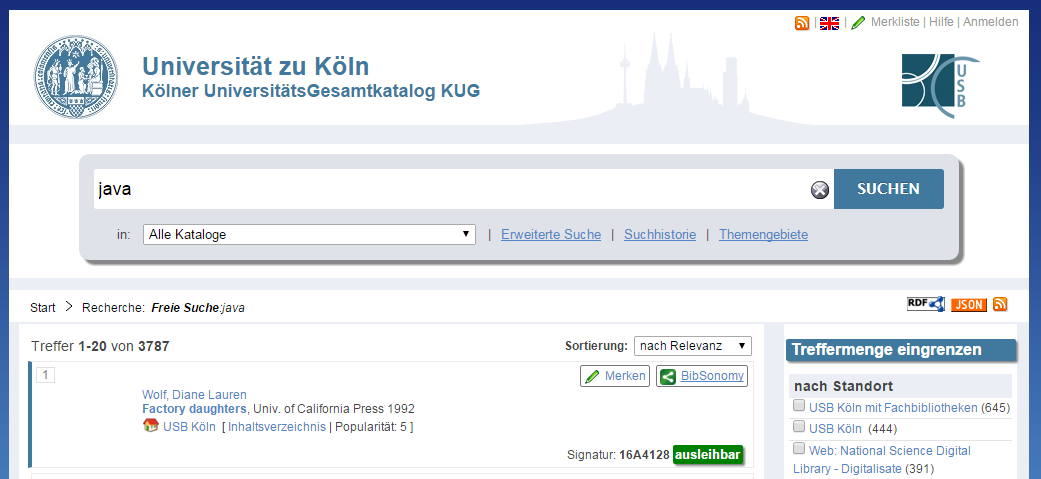With PUMA, users of digital library catalogues (Open Public Access Catalogues, OPAC) are able to collect and manage the information they retrieved from the catalogue.
Social bookmarking enhances search, collection and management of digital information. It allows participants to contribute and share information. Users can store the bibliographic information which they retrieved from the OPAC library catalogue and annotate it with their personal comments. They can also explore the resources of others, enlarging their own collection with interesting objects and being guided through the vast amount of information sources.
Here are some examples of how to integrate PUMA with OPAC library catalogues.
The digital library of the University of Cologne promotes the idea of integrating libraries with user-created bookmarking systems. They offer a simple link to the PUMA publication metadata interface where you can add tags and cross-check the reference data fields. By clicking on the green PUMA symbol (on the right next to an entry) you get redirected to PUMA. There, you can edit the data and add information.

The digital library of the University of Heidelberg offers to store the metadata of books and other publications in PUMA, too. To extract literature data of an entry to PUMA, click on an entry in the result list. On the upper right side on the grey bar, click on "Exportieren/Zitieren", then, choose PUMA. You get redirected to PUMA where you can edit the data before saving.

Click here to go back to beginner's area and learn more about the basic functions.